![]()
![]()
![]()
Use LEFT and RIGHT arrow keys to navigate between flashcards;
Use UP and DOWN arrow keys to flip the card;
H to show hint;
A reads text to speech;
11 Cards in this Set
- Front
- Back
- 3rd side (hint)
|
What is a Quadrilateral? |
A polygon with 4 edges and vertecies |
|
|
|
Sum of interior angles? |
360° |
|
|
|
Examples of Quadrilaterals: (6) |
Pallalelogram Rectangle Square Rhombus Kite Trapezoid
|
|
|
|
Properties of a Parallelogram: |
Opposite sides are parallel and congruent.Opposite angles are congruent.(Adjacent angles are supplementary.)Diagonals bisect each other and each diagonal divides the parallelogram into two congruent triangles.If one of the angles of a parallelogram is a right angle then all other angles are right and it becomes a rectangle. |
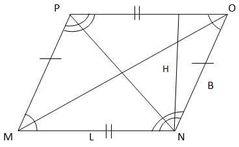
|
|
|
Formulas for a parallelogram: |
A = a × H (L×H on picture) P = 2(a + b) (2(L+B) on picture) |
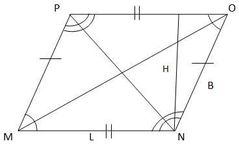
|
|
|
Properties of a rectangle: |
Opposite sides are parallel and congruent. All angles are right. The diagonals are congruent and bisect each other (divide each other equally). Opposite angles formed at the point where diagonals meet are congruent. A rectangle is a special type of parallelogram whose angles are right. |
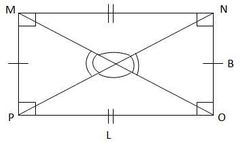
|
|
|
Formulas for a rectangle: |
If the length is L and breadth is B, thenLength of the diagonal of a rectangle = √(L2 + B2)Area = L × B Perimeter = 2(L+B) |
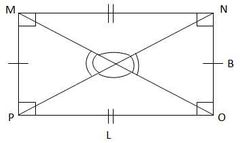
|
|
|
Properties of a square: |
All sides, angles and diagonals are congruent. Opposite sides are parallel to each other. The diagonals are perpendicular to and bisect each other. A square is a special type of parallelogram whose all angles and sides are equal. Also, a parallelogram becomes a square when the diagonals are equal and right bisectors of each other. |
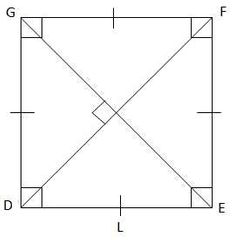
|
|
|
Formulas for a square: |
If ‘L’ is the length of the side of a square then: Diagonal = L √2. Area = L × L. Perimeter = 4L |
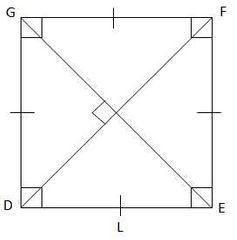
|
|
|
Properties of a rhombus: |
All sides and opposite angles are congruent. The diagonals are perpendicular to and bisect each other. Adjacent angles are supplementary (For eg., ∠A + ∠B = 180°). A rhombus is a parallelogram whose diagonals are perpendicular to each other. |
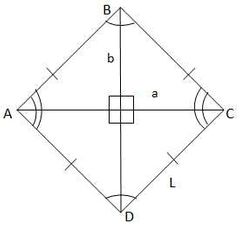
|
|
|
Formulas of a rhombus: |
If a and b are the lengths of the diagonals of a rhombus,Area = (a× b) / 2 or L×L Perimeter = 4L |
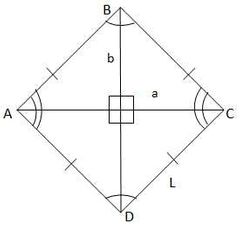
|

